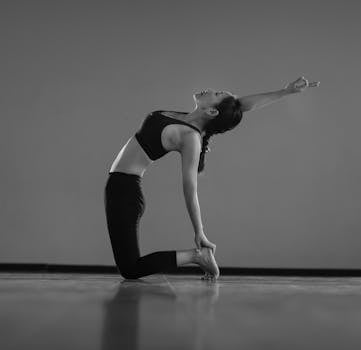
Mind-Body Connection: Enhancing Your Practice with the Principles of Yoga and Pilates
As someone who’s passionate about Mind-Body Connection, I’ve always been fascinated by the way our minds and bodies are interconnected. Have you ever noticed how a good workout can boost your mood, or how a stressful day can leave you feeling physically drained? It’s amazing how closely linked our physical and mental well-being are. In this article, we’ll explore the principles of yoga and Pilates, and how they can help you cultivate a deeper mind-body connection.
Understanding the Mind-Body Connection
So, what exactly is the mind-body connection? Simply put, it’s the idea that our thoughts, emotions, and physical sensations are all intertwined. When we’re feeling stressed or anxious, our bodies respond with physical symptoms like tension, fatigue, or insomnia. On the other hand, when we’re feeling calm and centered, our bodies respond with feelings of relaxation, energy, and overall well-being. By cultivating a stronger mind-body connection, we can better understand our thoughts, emotions, and physical sensations, and make positive changes to improve our overall health and happiness.
The Principles of Yoga
Yoga is an ancient practice that originated in India over 5,000 years ago. It’s a holistic approach to health and wellness that combines physical postures, breathing techniques, and meditation to cultivate a deeper connection between body, mind, and spirit. The principles of yoga are based on the idea that our bodies are made up of energy, and that by balancing and harmonizing this energy, we can achieve optimal health and well-being. Some of the key principles of yoga include:
- Breath awareness: Yoga teaches us to become aware of our breath, and to use it as a tool for relaxation, focus, and meditation.
- Physical postures: Yoga postures, or asanas, are designed to balance and harmonize the body’s energy, while also strengthening and flexing the muscles.
- Meditation and relaxation: Yoga teaches us to quiet the mind, and to cultivate a state of inner peace and calm.
The Principles of Pilates
Pilates is a more modern practice that was developed in the early 20th century by Joseph Pilates. It’s a physical fitness method that focuses on building core strength, improving posture, and increasing flexibility. The principles of Pilates are based on the idea that our bodies are capable of achieving optimal health and fitness through a combination of movement, breath, and mental focus. Some of the key principles of Pilates include:
- Core strength: Pilates teaches us to engage our core muscles, including our abs, back, and glutes, to support our spine and improve our posture.
- Body control: Pilates teaches us to control our movements, and to engage our muscles in a way that’s efficient and effective.
- Breath and movement: Pilates teaches us to coordinate our breath with our movements, and to use our breath as a tool for relaxation and focus.
Enhancing Your Practice with Yoga and Pilates
So, how can you incorporate the principles of yoga and Pilates into your practice? Here are a few tips to get you started:
- Start with breath awareness: Take a few minutes each day to focus on your breath, and to become aware of your body’s physical sensations.
- Try yoga or Pilates classes: Look for classes in your area that teach yoga or Pilates, and give them a try. You can also find online classes and tutorials if you prefer to practice at home.
- Practice regularly: Consistency is key when it comes to cultivating a deeper mind-body connection. Try to practice yoga or Pilates at least a few times a week, and see how your body and mind respond.
By incorporating the principles of yoga and Pilates into your practice, you can cultivate a deeper mind-body connection, and experience the many benefits that come with it. Remember to be patient, and to listen to your body as you explore these new practices. With time and practice, you can achieve a stronger, more balanced you, and live a happier, healthier life.







